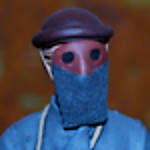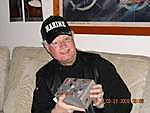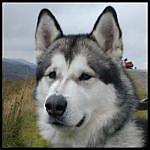Looks great, those cockpit parts are plastic, aren't they?
And you might want to get out the mini wipes, I think your engine has an oil leak.











 ) that shoulder belts were probably not standard. However they were installed as a field modification, and I have seen pics that indicates this –soooo they’re staying.
) that shoulder belts were probably not standard. However they were installed as a field modification, and I have seen pics that indicates this –soooo they’re staying.





 Hi Mikael:
Hi Mikael:




























 Thank You. I am still struggeling with the nose, but I'll post something on this when I have it looking half decent.
Thank You. I am still struggeling with the nose, but I'll post something on this when I have it looking half decent.


 Mental note: dryfit, dryfit, dryfit, and then do it some more...
Mental note: dryfit, dryfit, dryfit, and then do it some more...













 Hope you find it useful. The throttle linkage connects to the bulkhead from that joint between third and fourth cylinder.
Hope you find it useful. The throttle linkage connects to the bulkhead from that joint between third and fourth cylinder.



 Hi Mikael:
Hi Mikael:


 Hi Mark,
Hi Mark,





How's that DII coming along? It would be great if you wanted to post something... I am tempted by this one –The Encore kit is very expensive this side of the pond though... Suppose I could get another Roden DI and do the changes myself?
 Hi Mikael: It is coming along. I haven't taken in progress shots, and I have the fuselage all buttoned up and ready to paint. I will take some pictures tonight of where I am and then post some in progress shots. I am not real fond of PE, and I have a lot I haven't used. It would be challenging, but not difficult to a DII out of the Roden DI. The struts need to be shortened, (I think), you would have to put the radiator in the upper wing and the piping, that is about it as far as I can tell. Roll Models has them for $52.90, I don't know what shipping would be Sweden. If I could help get you one, let me know, as John Roll is a member of the Twin Cities Aero Historians and is at the meetings on a monthly basis, albeit I won't be at the May meeting.
Hi Mikael: It is coming along. I haven't taken in progress shots, and I have the fuselage all buttoned up and ready to paint. I will take some pictures tonight of where I am and then post some in progress shots. I am not real fond of PE, and I have a lot I haven't used. It would be challenging, but not difficult to a DII out of the Roden DI. The struts need to be shortened, (I think), you would have to put the radiator in the upper wing and the piping, that is about it as far as I can tell. Roll Models has them for $52.90, I don't know what shipping would be Sweden. If I could help get you one, let me know, as John Roll is a member of the Twin Cities Aero Historians and is at the meetings on a monthly basis, albeit I won't be at the May meeting.




Hi Mikael: It is coming along. I haven't taken in progress shots, and I have the fuselage all buttoned up and ready to paint. I will take some pictures tonight of where I am and then post some in progress shots. I am not real fond of PE, and I have a lot I haven't used. It would be challenging, but not difficult to a DII out of the Roden DI. The struts need to be shortened, (I think), you would have to put the radiator in the upper wing and the piping, that is about it as far as I can tell. Roll Models has them for $52.90, I don't know what shipping would be Sweden. If I could help get you one, let me know, as John Roll is a member of the Twin Cities Aero Historians and is at the meetings on a monthly basis, albeit I won't be at the May meeting.
Take care and keep those pictures coming.
Best
Mark
 Good to hear your Albatros is progressing. Thanks for your kind offer – I'll keep it in mind. At the moment I'm a bit overspent on my hobbybudget with WNW models (Are'nt we all?)
Good to hear your Albatros is progressing. Thanks for your kind offer – I'll keep it in mind. At the moment I'm a bit overspent on my hobbybudget with WNW models (Are'nt we all?)  So I'll keep a low profile on adding to the stash for a while.
So I'll keep a low profile on adding to the stash for a while.


 Hi Mark and Mark – Thank You for your kind words, they are much apreciated.
Hi Mark and Mark – Thank You for your kind words, they are much apreciated. 














 Looking good so far Mikael. There is one of these in the Squadron catalog for a mere $100.00 some dollars. Not sure if I want to pop that much for one but after seeing your build it is tempting. I would some how have to get it past the G.F.though.
Looking good so far Mikael. There is one of these in the Squadron catalog for a mere $100.00 some dollars. Not sure if I want to pop that much for one but after seeing your build it is tempting. I would some how have to get it past the G.F.though. |